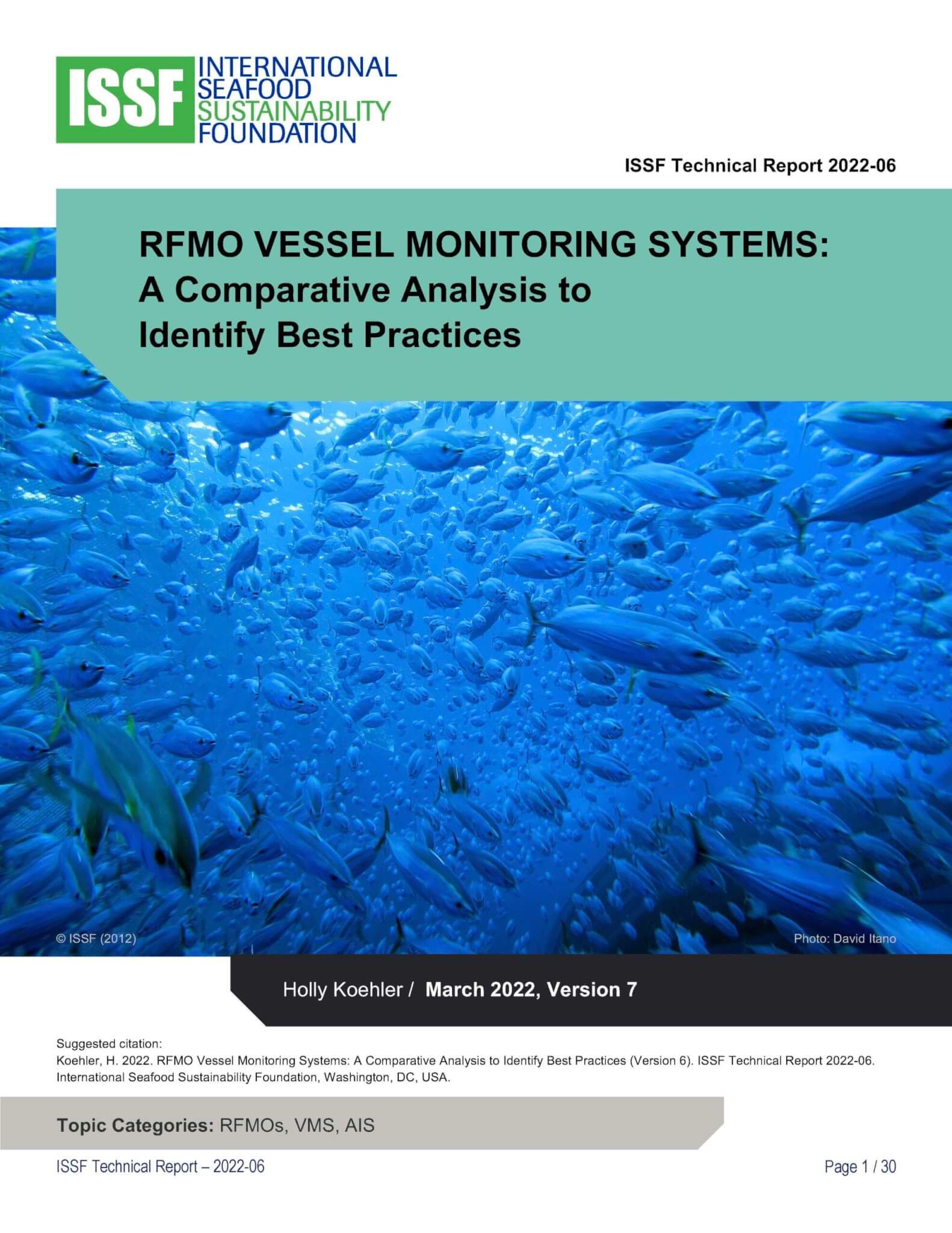Document: ISSF 2022-06: RFMO Vessel Monitoring Systems: A Comparative Analysis to Identify Best Practices*
Note: The information in this report is current for 2023. The RFMOs have not made changes to vessel monitoring system requirements since the report was published in 2022.
Regional Fisheries Management Organizations (RFMOs) for highly migratory species, straddling stocks and discrete high-seas stocks, have established either centralized RFMO satellite vessel monitoring systems (VMS) for the high seas of their areas of competence or prescribed requirements for national VMS systems to apply to vessels that operate in the RFMO areas of competence.
This Technical Report compares the satellite vessel monitoring systems (VMS) that are in place in regional fisheries management organizations (RFMO), or requirements for national VMS systems for vessels that operate in RFMO convention areas, and identifies a set of Best Practices that could be used by States and RFMOs in the development or strengthening of national, regional or sub-regional VMS programs for fishing vessels.
See also our RFMO Best Practices Snapshot on vessel monitoring systems.
- Best Practices ,
- CCSBT ,
- IATTC ,
- ICCAT ,
- IOTC ,
- RFMOs ,
- Vessel Monitoring System ,
- WCPFC
Downloads: 276 | Views: 7
